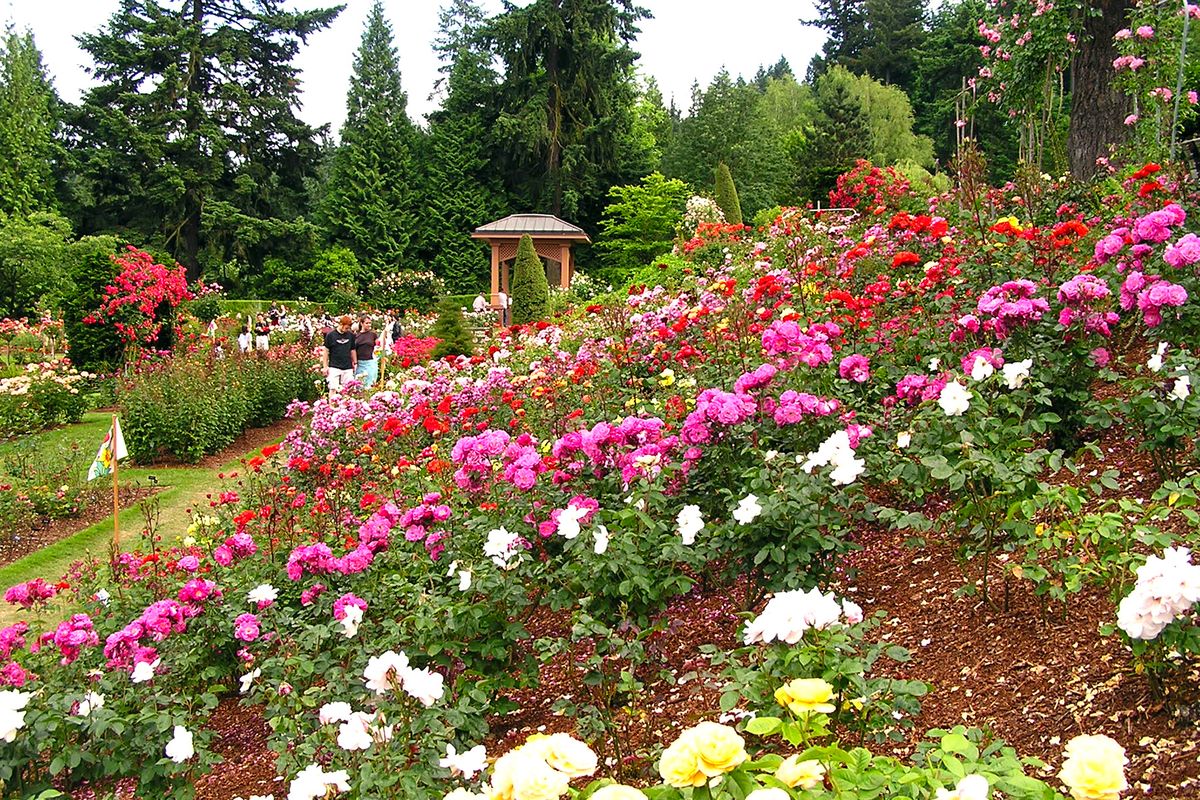History in bloom at Portland’s Rose Test Garden

PORTLAND – Boasting spectacular views of the city skyline and – on a clear day – snow-covered Mount Hood, Portland’s International Rose Test Garden in Washington Park is a refuge from a hectic world.
But during World War I, the rose garden offered a refuge of a different sort: It was a preserve for plants that European hybridists feared might be wiped out in the bombings.
This summer marks 100 years since the start of World War I in 1914, and while the rose garden did not become a reality until after the U.S. entered the war in 1917, it was proposed not long after the war began.
As early as August 1915, an Oregon newspaper reported that Jesse A. Currey, a Portland rose hobbyist, was working to gain support for his idea of a municipal rose test garden from American Rose Society President Wallace R. Pierson and Portland’s George L. Baker, then the city’s parks commissioner, and later its mayor when the garden was approved in 1917.
Currey got help from his friend George C. Thomas Jr., a rose enthusiast from Philadelphia and a captain in Army Air Service who flew in France during the war. In June 1918, the Oregonian newspaper called Thomas “America’s greatest amateur rosarian,” and reported that before he went to war, he left instructions that “as soon as the Portland garden was established, it should receive his two most promising seedlings.”
In early 1918, the garden began receiving plants from growers in England and Ireland, as well as Los Angeles, Washington and the Eastern United States.
The garden is an example both of Oregon’s support for the war through its natural resources – including food from its farms and timber from its forests – and as part of the era’s City Beautiful movement, said Chet Orloff, director emeritus of the Oregon Historical Society.
“Through that whole period, we are really putting a lot of effort, at least this city is, into creating a greater parks system,” said Orloff, who is president and director of Portland’s Museum of the City. “The rose was such an important part of the persona of the city, and this was a great way to contribute to an international effort to preserve something.”
Portland has long been nicknamed the “City of Roses.” A decade before the test garden was proposed, 20 miles of Portland’s streets were lined with rose bushes for the 1905 Lewis and Clark Centennial Exposition. Two years later Portland began its annual rose festival.
The test garden was a way to solidify the city’s reputation as a rose-growing center internationally – its supporters at the time worried Seattle or Tacoma could steal the title, according to the old newspaper accounts.
“This was still the era when cities were promoting themselves, and they did so by beautifying themselves,” Orloff said.
In its first year, the garden occupied about a block, between a playground and an elk corral. Today, it spans 4.5 terraced acres (1.8 hectares), with more than 10,000 rose bushes – more than 600 varieties in every shape and color except black and blue, even stripes, said Harry Landers, the garden’s curator.
Test beds are planted with new varieties evaluated on several characteristics, including disease resistance, bloom form, color and fragrance. A Gold Medal Garden features previous years’ best selections, and the Shakespeare Garden features roses named after characters in the bard’s works.
The flowers bloom from May until as late as November. Landers said about a half-million visitors from all over the world stop in to smell them each year.
“The fragrance is back into roses,” Landers said, noting that some rose lovers had worried the smell had been bred out of them in favor of disease resistance. “The fragrance is just intoxicating.”
They’re most fragrant in the heat of the day, Landers said, though that’s also when the garden is busiest. He said they’re at their most beautiful in the morning, and he prefers the garden in the early mornings as the city below comes to life.
There are no plans to mark the war’s centenary at the garden, but the city celebrates its 107th Rose Festival through June 15.